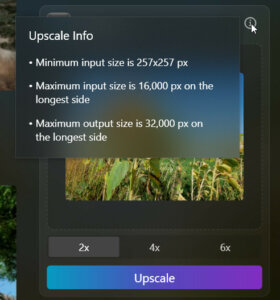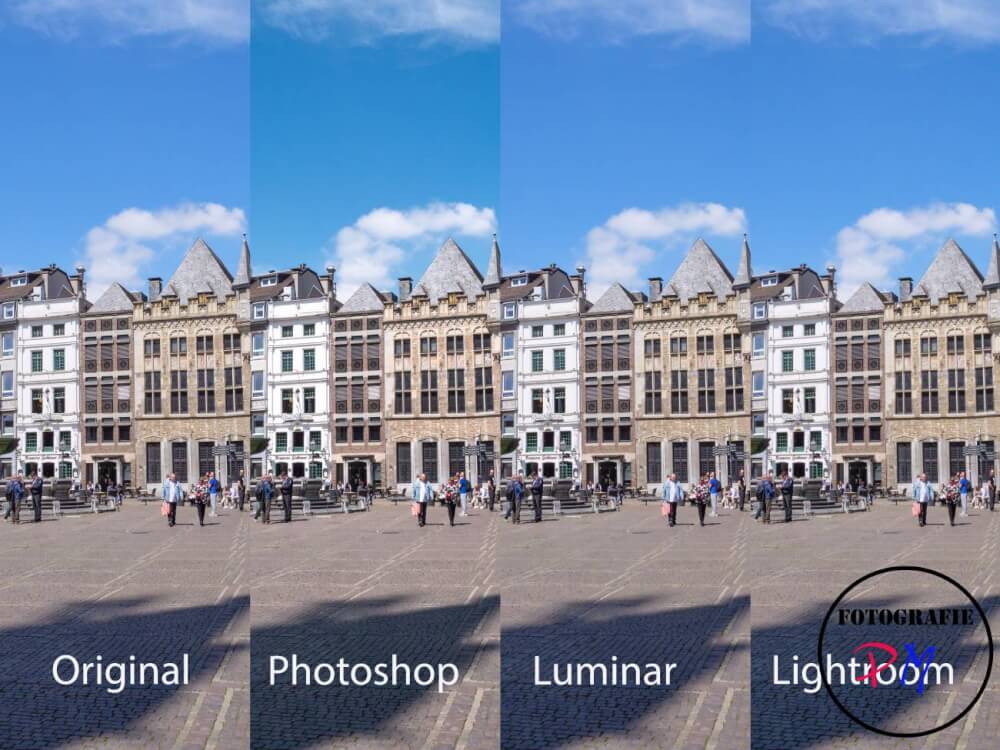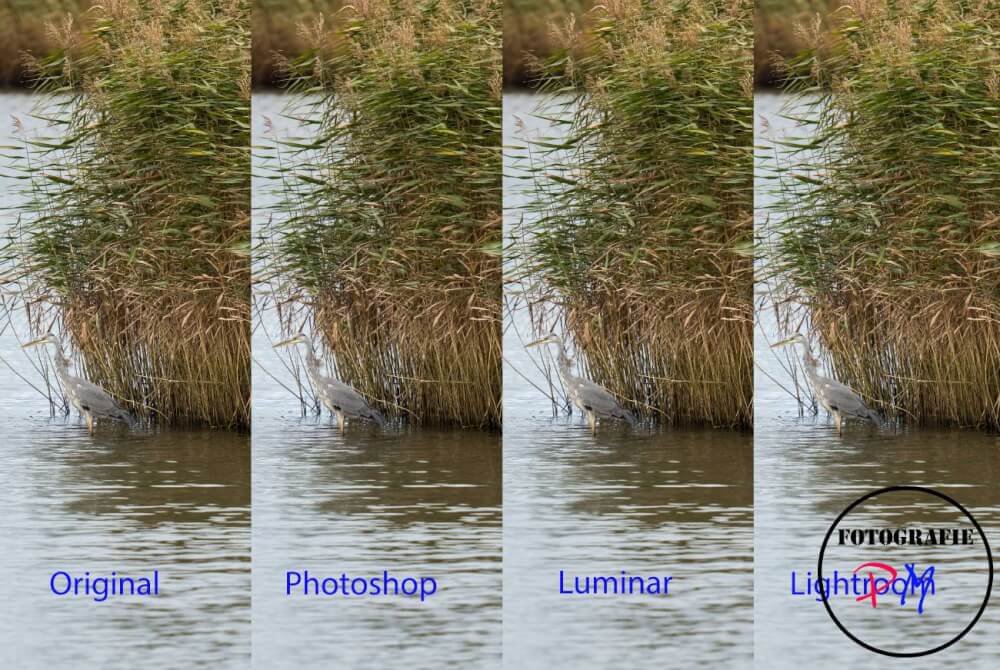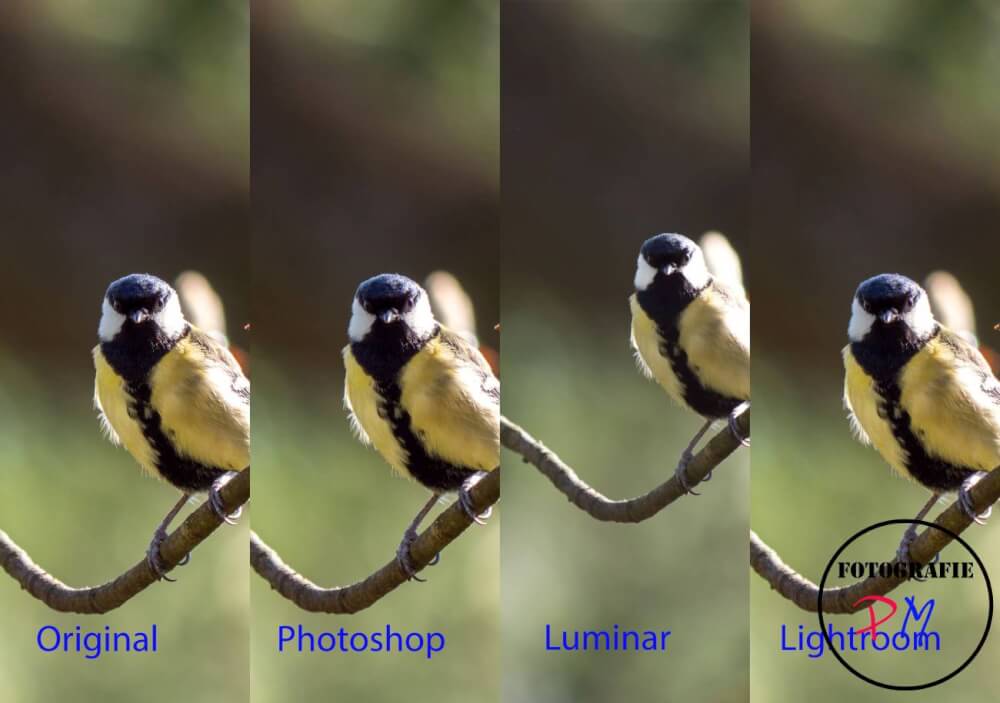Photoshop Superzoom filter compared to Luminar and Lightroom Classic
Many photo editing programs offer a function with which a photo can be enlarged. The terms “upscale” or “enhance photo” often conceal similar functions.
Introduction
 In Luminar NEO it is an extension with which a photo can be scaled up, in Lightroom Classic it runs under “Enhance photo” and relatively new is the “Superzoom” function in Photoshop. These functions can be used to increase the resolution, i.e. the number of pixels. While there is only a doubling in Lightroom Classic, a larger factor can be entered in Luminar NEO and also the corresponding Superzoom function in Photoshop. A photo from my Lumix S5 is then enlarged from the original 6000x4000px to 12000x8000px.
In Luminar NEO it is an extension with which a photo can be scaled up, in Lightroom Classic it runs under “Enhance photo” and relatively new is the “Superzoom” function in Photoshop. These functions can be used to increase the resolution, i.e. the number of pixels. While there is only a doubling in Lightroom Classic, a larger factor can be entered in Luminar NEO and also the corresponding Superzoom function in Photoshop. A photo from my Lumix S5 is then enlarged from the original 6000x4000px to 12000x8000px.
With Lightroom Classic, this function can also denoise the image in addition to enlarging it.
Today I want to compare the 3 options, how to use them and whether there is a clear winner.
I have also recorded a short video:
Operation

All 3 tools are very easy to use. Both when upscaling in Luminar NEO and in Photoshop’s Superzoom filter, you can select the factor by which you want to enlarge. In addition to 2x, there is also 4x and 6x magnification. With Lightroom Classic you can “only” double the resolution. However, I have never used more than the 2x magnification function provided by Lightroom Classic, as this seems to me to be a limit. If you exceed this, the image quickly becomes blurred and hardly usable.
With Photoshop and Lightroom, you can also denoise, whereas the Luminar extension does not provide for this.
The comparism
I have only enlarged the sample photos by a factor of 2 and have not used any additional denoising functions.
You can click on these images to download them in their original size. Then you can see for yourself.
This picture was taken with a Lumix G9, i.e. an mFT camera. By the way, the field labeled “original” has also been doubled in size using Photoshop’s “resize image” function. But I find it difficult to rate Luminar or Lightroom better now. At least in this example they are on a par.
The 2nd example is from the Lumix S5 and was taken with the Sigma 150-600mm. But I was still too far away. And this is the typical use case where you want to have some reserves to crop the image due to the magnification. In this case, the picture was taken at ISO 1,600 and noise is naturally also magnified. Photoshop is also in 3rd place here.
And as a 3rd example we take a photo that was taken with the Lumix G9 and the 100-300mm.
This is aggravated by the fact that the animal’s head is overblown, which is further intensified by slight blurring.
Conclusion
Unfortunately, the Photoshop extension regularly ends up in 2nd place in the comparison, while Luminar NEO and Lightroom Classic share 1st place. The differences are so small that you can easily compensate for them in the further processing of a photo. It’s up to you whether you want to use larger fold factors than the twofold enlargement in Luminar NEO. And remember, until February 26th you can get Luminar NEO at a considerably lower price and with the code AFF-y2DY you get an additional 20% discount on top.
ciao tuxoche





